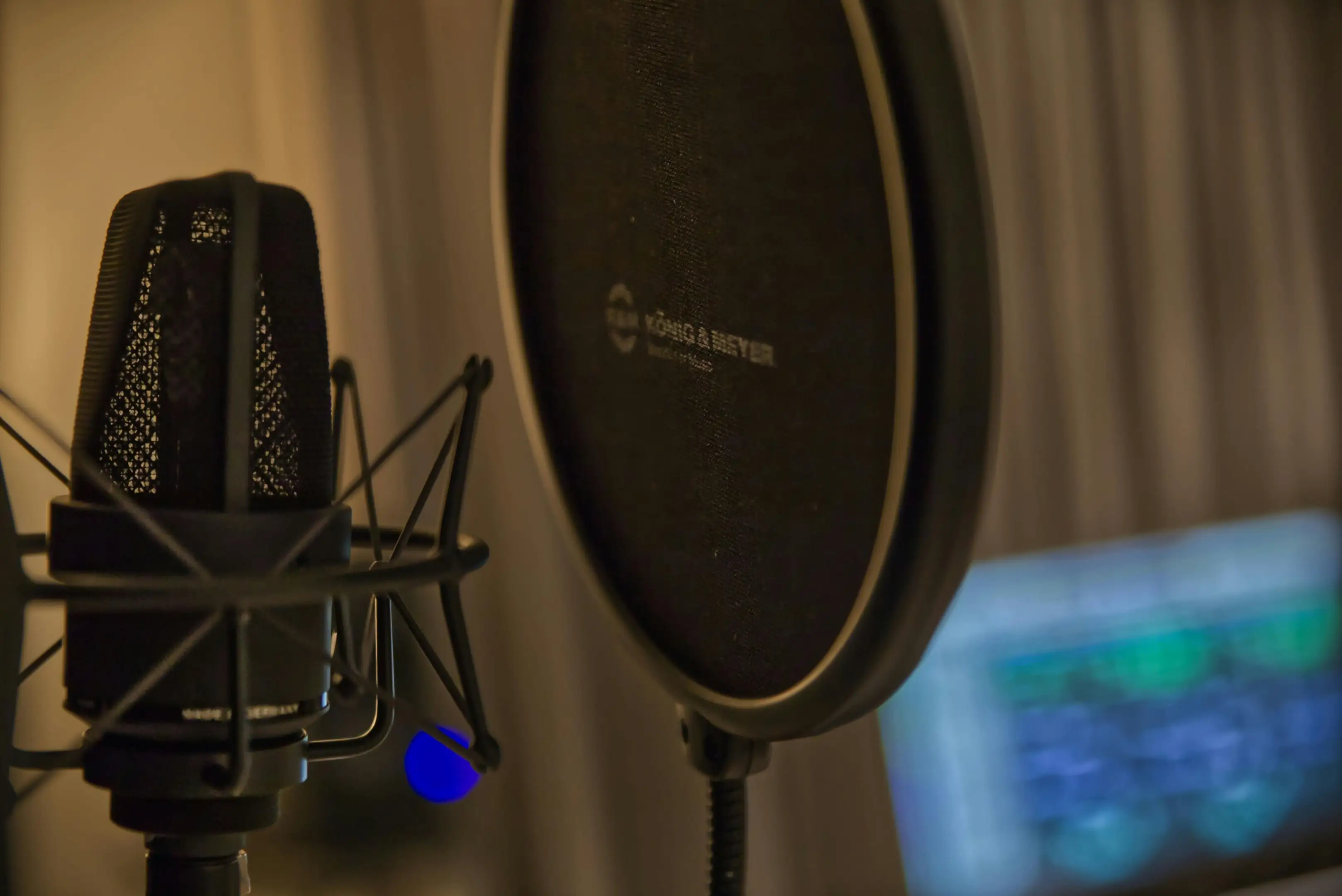In an age where producing studio records out of your bedroom is more common than ever, understanding basic microphone placement principles and recording techniques is paramount. While you may know how to set up and record with a directional microphone, you might not be aware of certain quirks like the proximity effect.
When it comes to the proximity effect, microphone placement isn't just important for picking up a clean sound source, it can also completely shift the creative direction of your song. In a nutshell, the proximity effect describes a phenomenon in which the registered frequency response shifts in response to the placement of your vocalist or other recorded sound source.
Below, we'll share exactly how to work with the proximity effect in your recordings so that you can have full control of the low frequencies in your session.
Understanding the Proximity Effect: How Does It Work?
In simple terms, the proximity effect occurs when there's a perceived bass boost or emphasized lower frequencies as a result of a sound source being close to the microphone. The closer to the sound source a directional microphone is, the more intense the emphasized bass or low-frequency sounds may be.
The proximity effect is unique to directional microphones since the pressure difference and amplitude difference between different points on a microphone diaphragm is what causes the apparent emphasis of lower frequencies. In a more technical view, the proximity effect is a direct result of sound pressure and resulting phase differences between the front and rear of a microphone diaphragm.
The discrepancy of phase difference is what leads to the perception change of a stronger bass presence. To hear less of a robust low end, the sound source must be placed further away from the microphone diaphragm.
Does the Proximity Effect Alter Some Microphones More Than Others?
Yes! Microphones with a more sensitive diaphragm tend to have a more pronounced proximity effect. The more directional a microphone is, the more pronounced the proximity effect will be. For this reason, figure-8 microphones tend to have the most pronounced proximity effect since this polar pattern picks up sound by measuring the distance between the front and rear mic diaphragms.
The only exception is an omnidirectional mic, as in this case, the microphone is picking up sound equally from all angles creating an intangible tonal difference as it relates to the played back recording.
Pros of the Proximity Effect
The proximity effect's greatest strength is that it can add warmth and depth to a sound that is otherwise lacking those characteristics. Keep in mind that you can use this effect on any sound source, whether that's a vocal, bass, guitar, or drum part. If you're looking to enhance this effect, you can bring your sound source closer to the microphone diaphragm. You can also choose to bring up the lows and mids during the mixing process using a multiband equalizer.
Cons of the Proximity Effect
The proximity effect can certainly be used to one's advantage, beefing up an otherwise tinny vocal. However, there are definitely some downsides including creating an overly muddy or boomy sound, or losing important detail in the mid- or high-frequency ranges. Fortunately, the beauty of the proximity effect is that you can reduce the intensity by reducing your proximity.
Simply back away your vocalist or sound source from the microphone capsule to lessen the lower register pickup during tracking. If you don't have that option, you can use an equalizer to roll off lower frequencies in post.
How to Reduce Proximity Effect
The only way to truly eliminate the proximity effect is to use omnidirectional microphones in your recording (not to be confused with a cardioid microphone set to an omnidirectional polar pattern). This is because omnidirectional mics are solely measuring pressure differences between the mic and the sound source. Therefore, the position is not taken into account as much as you would with a microphone measuring a mixture of pressure and velocity.

Other Common Auditory Considerations to Watch Out For
The proximity effect occurs with directional microphones, but there are other considerations to keep in mind when you're recording to produce clear, crisp sound:
Foot or Equipment Noise
It's easy to get expressive when you're recording a track full of emotion - however, don't let your enthusiasm prevent you from getting a clean recording. Slight taps to the microphone, XLR cable, or foot movement can compromise an otherwise clean recording. Ideally, record in an isolated environment without too many reflective surfaces like windows. The goal is to produce a clean, crisp sound so that you have the most flexibility during the mixing process.
Sibilance
Sibilance is the harsh "p", "s", and "t" sounds that come out often while recording vocals. While some of these can be avoided on the vocalist's end of things, you can also use external tools like pop filters to cut off some of the harsher transients during the recording process.
Noise Floor
If you're new to audio engineering, you might assume that knowing where and how to plug in equipment is enough to get started. One of the key missing ingredients of this workflow is the essential step of gain staging. Gain staging is the fairly simple but critical process in which an engineer sets every piece of equipment at an optimal recording level to produce a high signal-to-noise ratio (maximizing how much of the sound source you're capturing, while reducing the natural noise that occurs from generating an electrical signal).
Some microphones require tools like preamplifiers to boost their gain and cannot be used to record right out of the box. Most studio microphones are also condenser microphones, which require a source of phantom power to operate.
Having the right level of power for your microphones with a balanced gain level can help ensure that you create balanced recordings that pick up dynamics in a track without missing out on key sonic details or clipping the louder transients of your track.
Get to Know Your Microphones
Not all microphones produce a flat frequency response: Certain mic types may be more prone than others to produce a warmer low end or crisper high-end than others. If you regularly circulate between different mic types, it's a good idea to do a neutral test across the board, recording similar vocal lines without processing and see how the files differ when you bring them into your DAW. Understanding the intricate tendencies of the microphones in your toolkit will help you pair the proper vocalists with the right gear for the job.
In short, understanding the proximity effect can give you a better window into how the low-frequency response works, improving your recording technique as an engineer. The proximity effect will vary based on different polar patterns, but when in doubt, conduct a microphone test before settling into real recordings to determine how much leeway you have in terms of distance.
Don't forget that the proximity effect can also be used to your advantage. An otherwise tinny or thin sound becomes more full and embodied as a sound source moves closer, which can be challenging to recreate without this auditory illusion. Have fun using your newfound knowledge to help you make informed decisions surrounding sound energy, pressure, and vocal technique.





